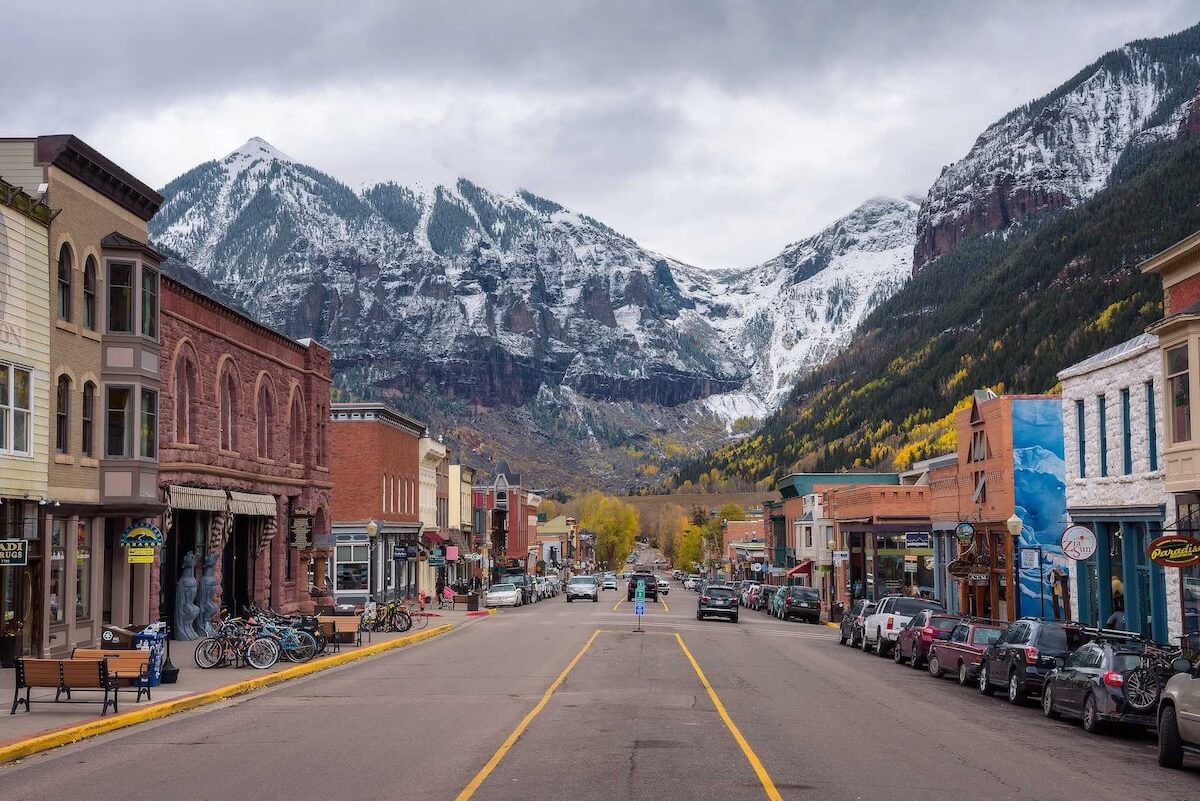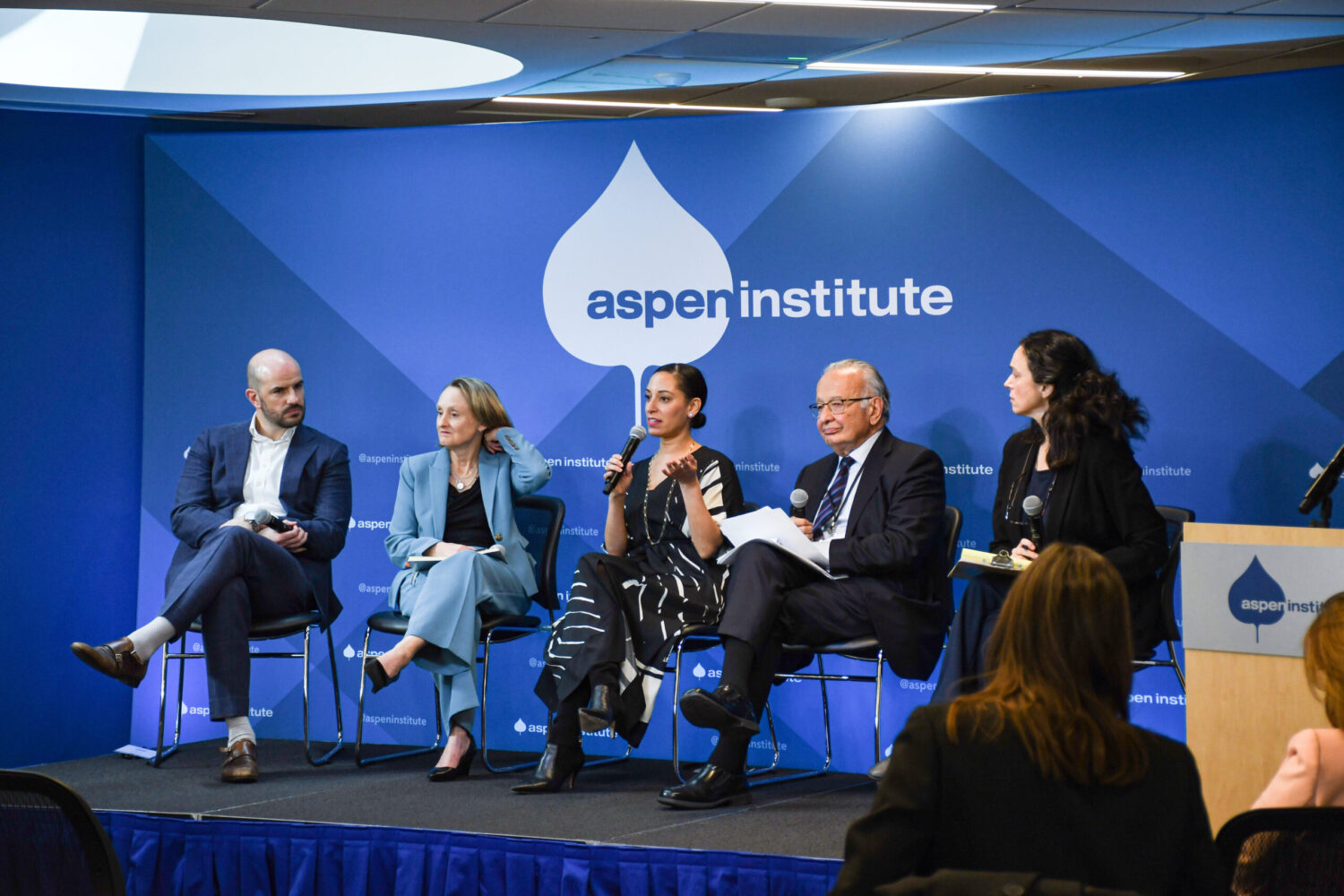This is the year capital markets set sail for the inclusive and sustainable future. Or else.
ImpactAlpha is on the lookout for signals that global and local capital markets are shifting from exclusion and extraction to inclusion and regeneration. Long-term value creation may be the watchwords of this new capitalism. What’s really at stake is power.
ImpactAlpha rounded up our 2019 coverage as a guide to the year to come. We don’t offer predictions per se, and we tried to test our aspirations against the evidence. We’ve gathered signals from a future that is already here, if not yet widely distributed (h/t William Gibson).
That a power shift already is underway can be seen in the groundswell of entrepreneurship and innovative finance; in the growing long-termism of the largest institutional asset owners; in the rising power of women; in the tipping points of climate finance; and in thousands of communities around the world. Here’s some of what we’ll be watching for in 2020.
Stakeholders are taking back capitalism
Local, inclusive and entrepreneurial
The people are rising up. Protests erupted this year in cities around the globe, sparked by price hikes and service cuts, inequality and corruption, and affronts to human rights and democracy. Millions of young people demanded action in the face of the climate emergency. An awakened populace is demanding change.
With this year’s uprisings, stakeholders put capitalism on notice. In 2020, they’re taking it back. A signal of the coming shift came last August, when 181 CEOs grudgingly acknowledged communities, customers, suppliers and workers as stakeholders, along with shareholders. “Universal” asset owners are driving mandates for “sustainability.”
But this uprising is bottom-up, not top-down. As protests have burst out, so has a “quiet revolution” in neighborhoods and cities around the country and the world. Startup hubs, hackers and makers, activists and investors are reviving cities like Baltimore, Louisville and Erie, Pennsylvania. Nairobi, Mumbai and Bogota hum with the beat of entrepreneurship.
The local, can-do, get-sh*t-done attitude offers an alternative to division and paralysis, a new narrative for a time that sorely needs one. Local Agents of Impact are tapping hometown love, underestimated talent and technological scale to build thriving businesses that serve local needs, create jobs and restore neighborhoods. The new tools of capitalism are giving communities a larger say, and a larger cut.
Best practices provide blueprints for a stakeholder economy that is bipartisan, post-partisan, or not partisan at all. The new structures of finance are backing a broader set of founders building a broader range of businesses.
Long-term value creation may be the watchwords of this new capitalism. What’s really at stake is power.
The people are rising up and they’re taking business and finance with them.
Universal owners push asset managers to push corporations toward sustainability
Institutional Shift
The axis of global finance shifted this year. In small increments and dramatic lurches, markets glimpsed the coming reckoning.
That reckoning is most obvious with climate change. But as global protests spread, the systemic risks of income inequality may be even more immediate. That’s why “sustainability” has emerged as the disruptive force in the $75 trillion asset management industry.
This past year will be seen as the year financial markets accepted “ESG” as the response to those risks. Every major bank and asset manager has spun up their sustainable finance unit. Record amounts of capital flowed into funds keyed into environmental, social and governance factors. Private equity firms launched billion-dollar “impact” funds. Accounting and accountability for impact moved capital and clients.
The scale of the shift may not yet be clear to many retail investors, who still largely lack products for values-aligned investing.
But for the world’s largest asset owners, mitigating long-term risks is an immediate priority. For such “universal owners,” there are no externalities. With assets of $100 billion or more, huge pension, sovereign and insurance funds effectively “own the market,” including its systemic risks.
For them, sustainability is core to the sustainability of the financial markets themselves. Their long-termism is key to overcoming what Mark Carney calls “the tragedy of the horizon.”
But 2020 will be known as the year when risk-reduction was no longer enough. The ‘E’ in ESG now essentially means ‘Climate,’ and carbon dioxide levels are rising, not falling. The real ESG leaders will be driving emission levels down not only faster than their peers but faster than their own best-case scenarios.
ImpactAlpha has staked the claim that ‘S’ stands for ‘Share the Wealth.’ A broader distribution of income through enhanced worker power is both a pro-social and a pro-growth policy that all parties should embrace. And yet, the distribution of income and wealth continues to skew upwards. Real ESG leaders will operationalize strategies for good jobs, portable benefits and flexible family policies.
The supertankers of global finance have begun to shift course. Yet the speed at which the policies and processes have moved capital so far is no match for the scale of the challenges. Zero-deforestation pledges notwithstanding, rainforests burned.
It will take a decade of exponential progress to meet the 2030 Sustainable Development Goals, and decades more to achieve net-zero carbon emissions, hopefully well before 2050. The reckoning is here. 2020 is a year in which choices and reputations will be made.
Impact in emerging markets is a 2020 growth story
Capital on the Frontier
Not enough money for promising ventures. Too much money flowing to a few companies. Both statements are true for impact-oriented small and growing businesses in emerging markets.
Financing small and growing businesses is the frontier of finance in emerging markets. It’s a classic market opportunity: solving large problems for large populations with distributed solutions made possible by dramatically falling costs for electricity (solar), connectivity (mobile) and computing power (cloud).
As countries try to move from extractive to regenerative economies, the biggest area of entrepreneurial innovation is in positive social impact: intrepid startups are targeting climate resilience, helping farmers deal with increasingly unpredictable weather patterns that threaten their livelihoods and the global food supply.
In the rising megacities in Africa, Asia and Latin America, solutions for urban living will thrive. In second- and third-tier cities and the still populous countrysides, basic services like electricity, digital connectivity, and financial products is a scaled opportunity. The collective spending power of the world’s emerging middle class will nearly double to $64 trillion by 2030.
Too much money. A select few entrepreneurs are riding a private-equity and venture-capital gold rush. Many of the big new investors report the need for “an Africa play.” Billion-dollar funds face pressure to get capital deployed. SoftBank’s Vision Fund broke the barriers, but other investors also have been willing to throw big money at a few would-be unicorns in markets where the pipeline of companies able to take such big checks is slim.
Not enough money. Yawning capital gaps remain for early-stage companies, women and other underrepresented founders, and second- and third-tier cities and towns.
If or when megadeals fall out of favor and the private-equity giants pull out, it will again fall to emerging market impact investing veterans to make the numbers work with six- and seven-figure deals and flexible investment structures. They’ll keep working to scale up impact as they scale up revenues.
And they’ll be working to build a genuine capital market for proven, locally relevant solutions from a broad base of impactful companies.
Reshaping risks and rewards to make markets work
Catalytic capital
Attractive returns are in the eye of the beholder. For some investors, catalyzing capital for high-impact ventures – or better yet, whole new markets – is a bona fide home run.
Those able to accept higher risks or lower returns, more flexible terms or longer repayment periods get to bridge not only capital gaps, but conceptual gaps about how much finance can do. Such catalytic investors “are relatively rare in capital markets today but are invaluable for the growth and scaling of impact enterprises and development of new impact industries,” the consultancy Tideline found in a report last spring.
Making catalytic capital cool is one aim of the Catalytic Capital Consortium of the MacArthur and Rockefeller foundations and Omidyar Network (all long-standing partners of ImpactAlpha). Instead of below-market, concessionary, sub-commercial and subsidized, think high-impact, innovative and strategic. And, of course, “smart” – too much or the wrong kind of subsidy can distort markets, impede competition or prop up unsustainable enterprises. Still, catalytic capital can help businesses with uneven cash flows, longer runways to profitability or modest operating margins. By lowering risks or raising returns for other investors, catalytic capital can help enterprises attract commercial capital needed to scale.
“We want very much to see market-rate capital grow and continue to grow,” says MacArthur’s Debra Schwartz. “But we have to recognize that market-rate capital doesn’t work in all circumstances. If we don’t have a healthy commitment to the catalytic piece, we’ll be leaving impact behind.”
Leaders and laggards in the race to net-zero
Climate Finance
Even in the best of circumstances, an annual 7% reduction in greenhouse gas emissions would be a heavy lift. Yet 7%, every year for three decades, is actually just the minimum reduction target we must hit to try to avert the worst of catastrophic climate change.
If we halve emissions by 2030, halve them again by 2040, and then again by 2050, we may be able to reach net-zero emissions and meet the goals of the Paris climate accord. That 7% is a pace of change the world has never approached – the best-performing industries and geographies are achieving annual reductions of perhaps a couple percentage points. The need for exponential progress has never been clearer.
And these aren’t the best of circumstances.
As we enter 2020, it’s worth remembering this was to be the year emissions peaked and countries ratcheted up their ambitions for rapid reductions. Instead, the breakdown of the COP25 climate talks in Madrid set back the Paris process, perhaps irreparably. The IPO of oil giant Saudi Aramco may be a signal that we’ve reached Peak Oil, but the oil axis of Saudi Arabia, Russia and now the U.S. government is trying to ensure a long tail for the fossil fuel economy. At the end of the warmest decade on record, fires swept the Amazon, swaths of California and now Australia. U.N. Secretary General António Guterres laments that the point of no return “is in sight and hurtling toward us.”
Climate wars, climate refugees and climate emergencies of disaster, drought and disease will test our social resiliency as never before.
Around the world, young people are in the streets protesting inaction by governments, banks and energy companies. This winter will see a campaign to increase pressure on asset managers like BlackRock, which by its sheer size is among the biggest owners of fossil fuel companies, and big banks like JPMorgan Chase, the largest backer of oil and gas projects. Dozens of countries have pledged to achieve net-zero carbon emissions by 2050, the new table-stakes for signaling a serious commitment to climate action.
A presidential election in the U.S. will determine whether the world’s largest per capita emitter of greenhouse gases will again be a climate leader or laggard. The table is set for dramatic action. Deadlines loom.
If 7% is do-able, then so is 8% and more, compounding each year into what has been called the Global Law of Carbon. Yes, carbon emissions have not yet peaked. Yes, a 7% reduction has never yet been achieved. But falling cost curves, increasing returns to scale, distributed architectures – and policy leadership –– make it not inconceivable. Of course, it’s the first doubling that’s the hardest.
But that’s the nature of exponential progress: Things move very slowly, until they move very fast.










